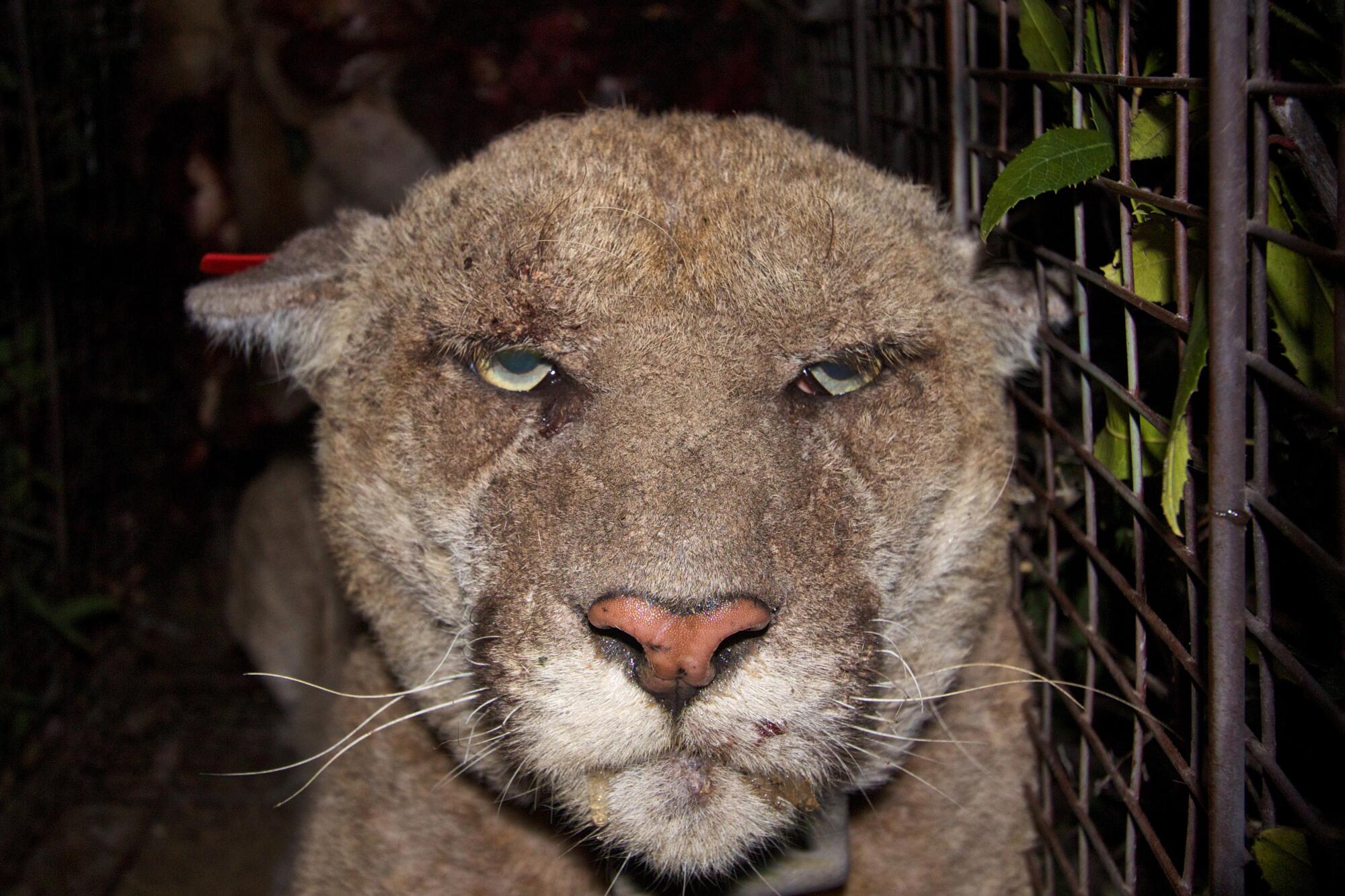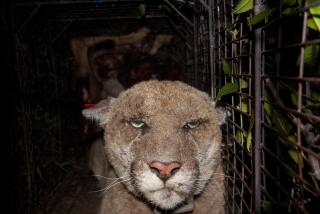
California lawmakers have passed a pair of bills aimed at making the landscape safer for wildlife threatened by habitat fragmentation and ubiquitous rat poison.
AB 1889, known as the Room to Roam Act, directs cities to consider and protect wildlife connectivity in their land-use plans. Meanwhile, AB 2552, dubbed the Poison-Free Wildlife Act, puts restrictions on certain types of rat poison, including removing them for over-the-counter purchase and limiting their use in wildlife areas.
“Our wild neighbors should have the freedom to find food, mates and shelter, and should not be sickened or killed by reckless use of poisons, and so we owe it to ourselves and California wildlife to find ways to coexist,” said J.P. Rose, urban wildlands policy director at the Center for Biological Diversity, which sponsored both bills.
The public-private effort underpinning the largest wildlife crossing in the world, under construction near L.A., has inspired an initiative to replicate it across California.
The bills, which now go to the governor’s desk for final approval, were authored by Assemblymember Laura Friedman (D-Glendale). They cleared the Legislature last month and build on previous laws she spearheaded.
Cars, lack of connectivity and poison are the top threats to imperiled mountain lions in Southern California’s Santa Monica Mountains. The late, famed cougar P-22 was struck by a car toward the end of his life a few blocks south of Griffith Park and a subsequent exam revealed an old injury that may have been caused by another collision. He was also exposed to rat poison and developed mange.
Efforts to boost wildlife connectivity in the Golden State have gained momentum in recent years. What’s billed as the largest wildlife crossing in the world is rising over a 10-lane freeway near Los Angeles, while last month saw the launch of an initiative seeking to leverage public and private resources to build more safe passages for critters across the state.
Aggressive and impactful reporting on climate change, the environment, health and science.
Room to Roam arrived about two years after the passage of a law that directed the California Department of Transportation to explore wildlife connectivity when it builds or expands roadways. (As required by that law, Caltrans recently released its wildlife connectivity report.) The new bill “addresses the land-use side of the coin,” Rose said.
Mari Galloway, California program director for the Wildlands Network, a co-sponsor of both connectivity bills, said there was concern that a local government might allow development in an area where Caltrans invested taxpayer money to make it passable for animals.
The new bill aims to avoid that headache by fostering coordination among various agencies and requiring local leaders to consider how development affects the movement of wildlife and habitat connectivity.
“The intention of the bill is to try to get everybody moving in the same direction in trying to identify where these landscapes need to remain permeable to ensure that we can continue to have this biodiversity,” Galloway said.
Cities and counties decide where development goes through long-term planning documents, known as general plans. This bill would mandate that local leaders “identify where these wildlife connectivity areas are in their general plan and then avoid, minimize and mitigate impacts to that area to be a functional linkage for wildlife,” Galloway said.
Proponents say wildlife movement isn’t currently considered until the end of the planning process — missing the opportunity to view the issue from a regional standpoint.
“What this bill seeks to do is front-load consideration of wildlife connectivity, so planners, builders and communities have a clearer picture of which areas are safer to build for both people and wildlife,” Rose said.
A renewed effort to list burrowing owls under the California Endangered Species Act just cleared an early hurdle. Conservationists say the situation for the owls that nest underground has only gotten worse in recent years.
Although the bill does not require wildlife crossings to be built or set aside land, Friedman’s office said it was expected to result in the creation of passages, wildlife-safe fencing and reclaimed land or water.
In a statement, Friedman underscored the potential benefits to people: “Preserving wildlife connectivity and restoring degraded habitat and open space also helps ensure that all Californians have equitable opportunities to experience the physical and mental health benefits of nature.”
If passed, the soonest local governments would need to comply with the directives is Jan. 1, 2028.
Rose said the California Building Industry Assn. initially opposed the bill unless it was amended, and withdrew the opposition after its concerns were addressed.
Although previous laws have limited the use of certain rat poisons, others remain widely available. The Poison-Free Wildlife Act would place restrictions on additional types.
“This bill is an attempt to get some of those off the shelves so that people aren’t going to Home Depot and buying these super toxic rodenticides and unknowingly poisoning wildlife,” Rose told the Times earlier this year.
The poisons being targeted — chlorophacinone and warfarin — are known as first-generation anticoagulant rodenticides. They stop a rat’s blood from clotting and stay in the animal’s system after it dies. When an unsuspecting mountain lion or owl gobbles a dead or sick rat — or another animal that ate a tainted rat — the toxic substance is passed on.
Rose called the effects “really heartbreaking.” He said poisoned predators don’t always die right away; sometimes they “slowly bleed to death from the inside.”
Gov. Gavin Newsom has until Sept. 30 to sign the bills.










